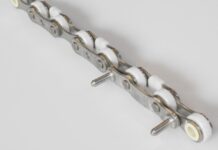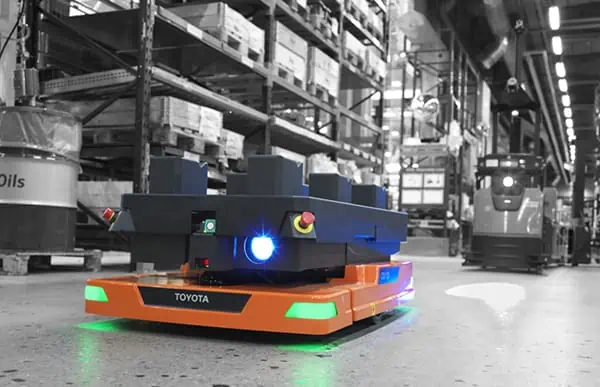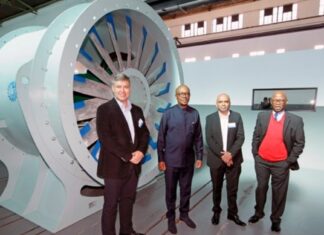THE rise in mega warehouses designed as major regional distribution and storage centres in South Africa is changing the way goods are moved within these buildings – and the buzzword is automation. Robots and machines are increasingly taking on many of the monotonous tasks in warehouses that have traditionally been done by humans.
South Africa’s shift from a primarily manufacturing-based economy to importing most manufactured goods from other countries has made large warehouse buildings near busy ports an economic necessity. However, the ability to store more goods in mammoth warehouses is not without its challenges.
The sheer size of the mega warehouse – often running into hundreds of metres in length – means the driver of a traditional forklift will spend a lot of time going to and fro to fetch product pallets. An agile solution is the Automated Guided Vehicle (AGV) which can transport goods between two points in manufacturing facilities, warehouses or distribution centres without the need for a driver.
These vehicles speed up the flow of heavy materials by moving along a pre-designed circuit without becoming fatigued, thus increasing efficiency and allowing forward-looking companies to redeploy labour into positions that are more stimulating and require human intervention.
With giant e-retailers driving fast-paced distribution, the idea of the autonomous warehouse is becoming more widespread.
CFAO Equipment South Africa is driving the automation of warehouse machinery through its Toyota Material Handling division which sells forklifts and solutions.
Fritz Barnard, National Technical Specialist at CFAO Equipment SA, says the popularity of AGVs is booming globally due to their ability to automate repetitive manual tasks, ensure visibility of material flow and reduce the risk of site downtime.
“Essentially, AGVs help separate repetitive workflows from unique ones. And by removing those time-consuming activities that take away energy and resources, they add to greater efficiency and productivity,” says Barnard. “It must be stressed that the addition of AGVs will not make skilled workers redundant. In many instances AGVs perform tasks that humans are not well equipped to handle. For example, an AGV can work in extreme temperatures and are well suited for excessively repetitive tasks like retrieving empty pallets in continuous 24/7 operations, disregarding breaks and skipping any kind of absence.”
“While AGVs handle the monotonous tasks, the employees who used to perform that task can be retrained and placed in other areas of the warehouse where their skills can be more fully utilised. Thus, the integration of AGVs upgrades the modern workplace, allows employees to utilise their talents and even secures existing jobs by making companies and their processes more efficient and competitive,” says Barnard.
The onboard software of driverless vehicles guides their movement, helping them move along predefined paths avoiding obstacles and ensuring safety.
Automation of the warehouse is a project-based operation – software must be written specifically for each warehouse, and it can take up to 2 000 man-hours to automate a site.
Barnard says reflector navigation is the company’s chosen navigation method. Reflectors are installed on-site and scanned by each automated vehicle, allowing it to define its position based on the distance to the reflectors. On top of this, AGVs include built-in safety scanners, obstacle detection units, load sensors and vision cameras to prevent collisions, guaranteeing accurate and safe load handling.
The benefits for customers of AGVs is that the new technology machines are agile and safe while reducing load movement times. Fewer machines are needed to do the same job.















